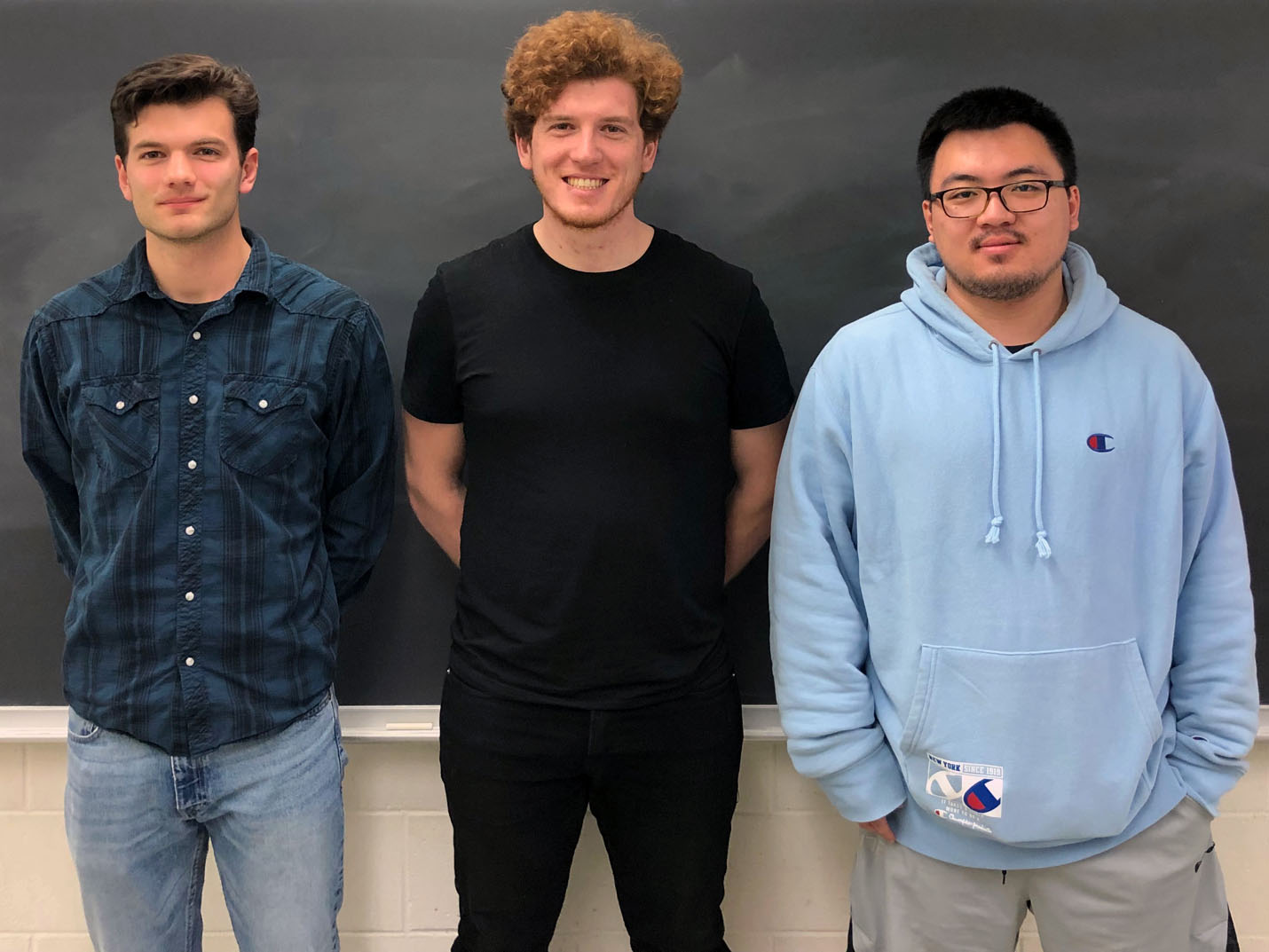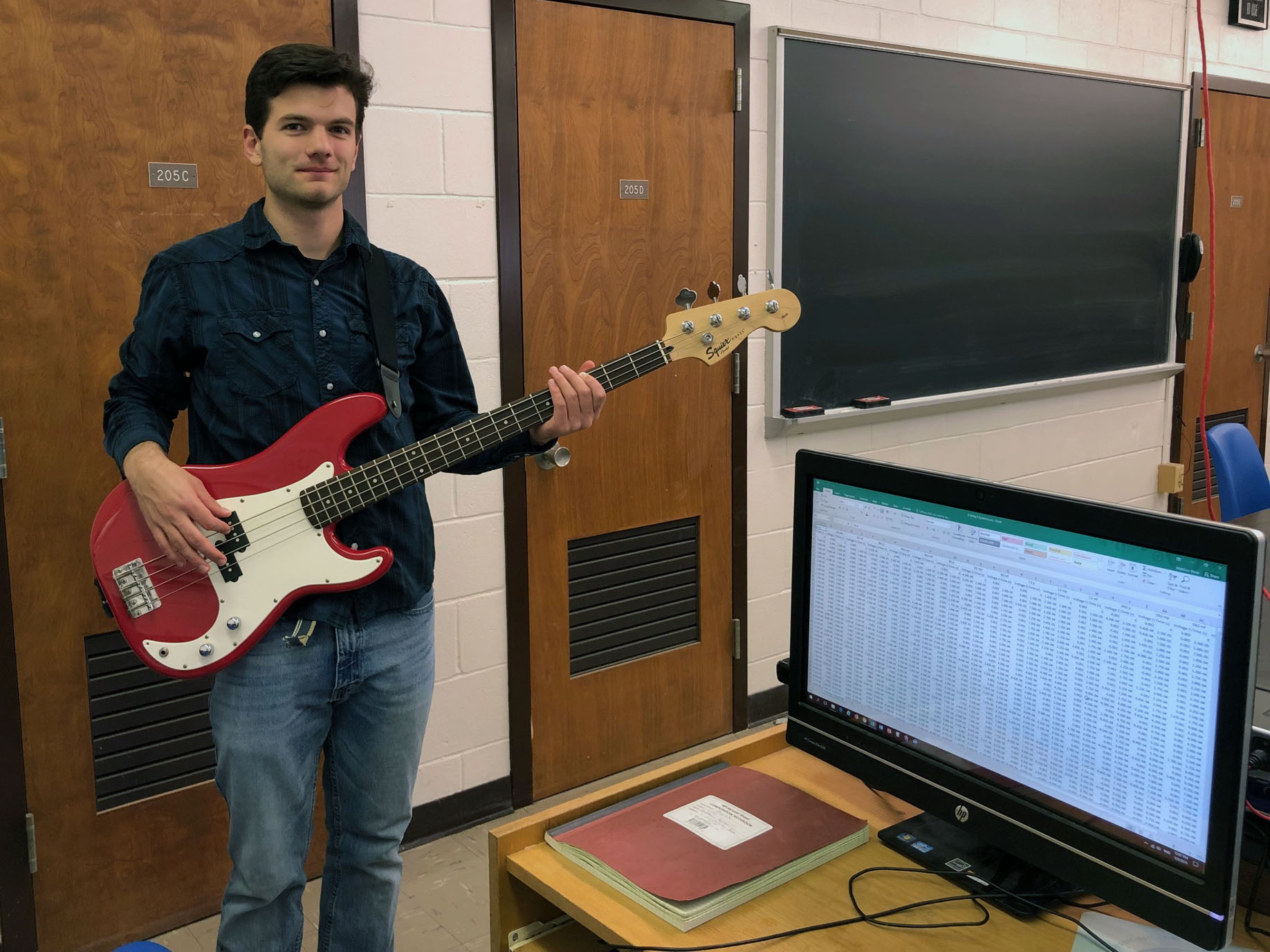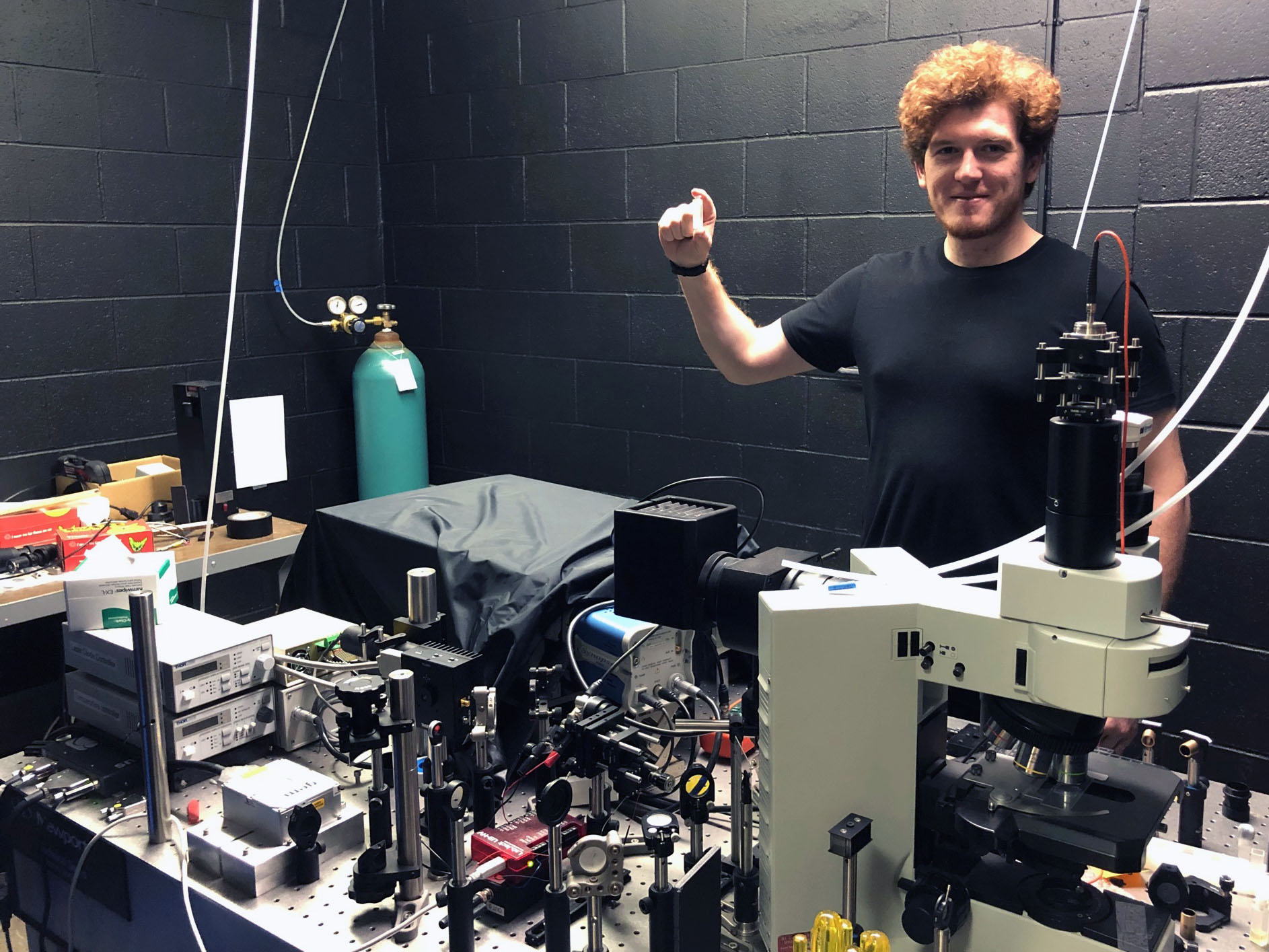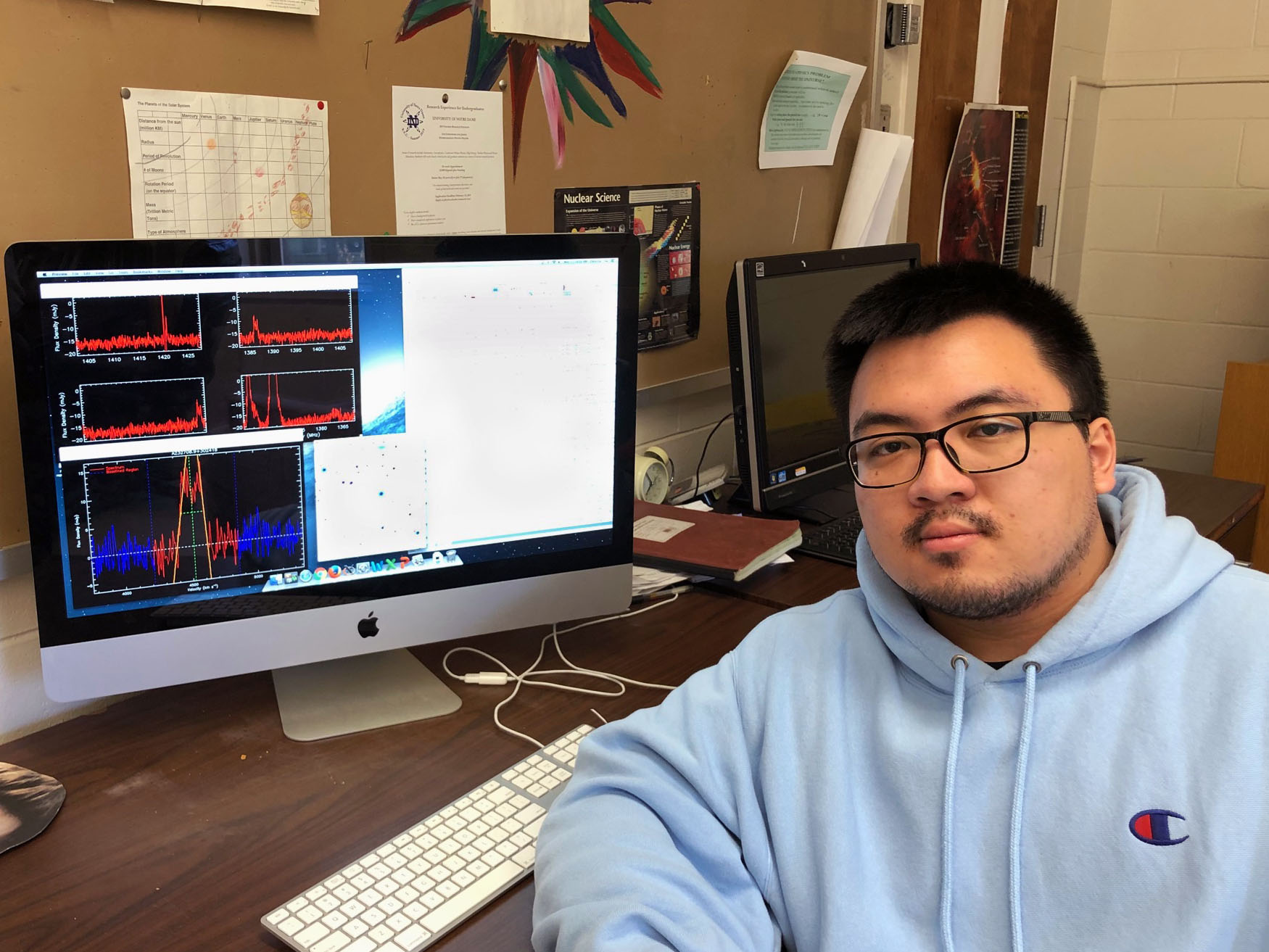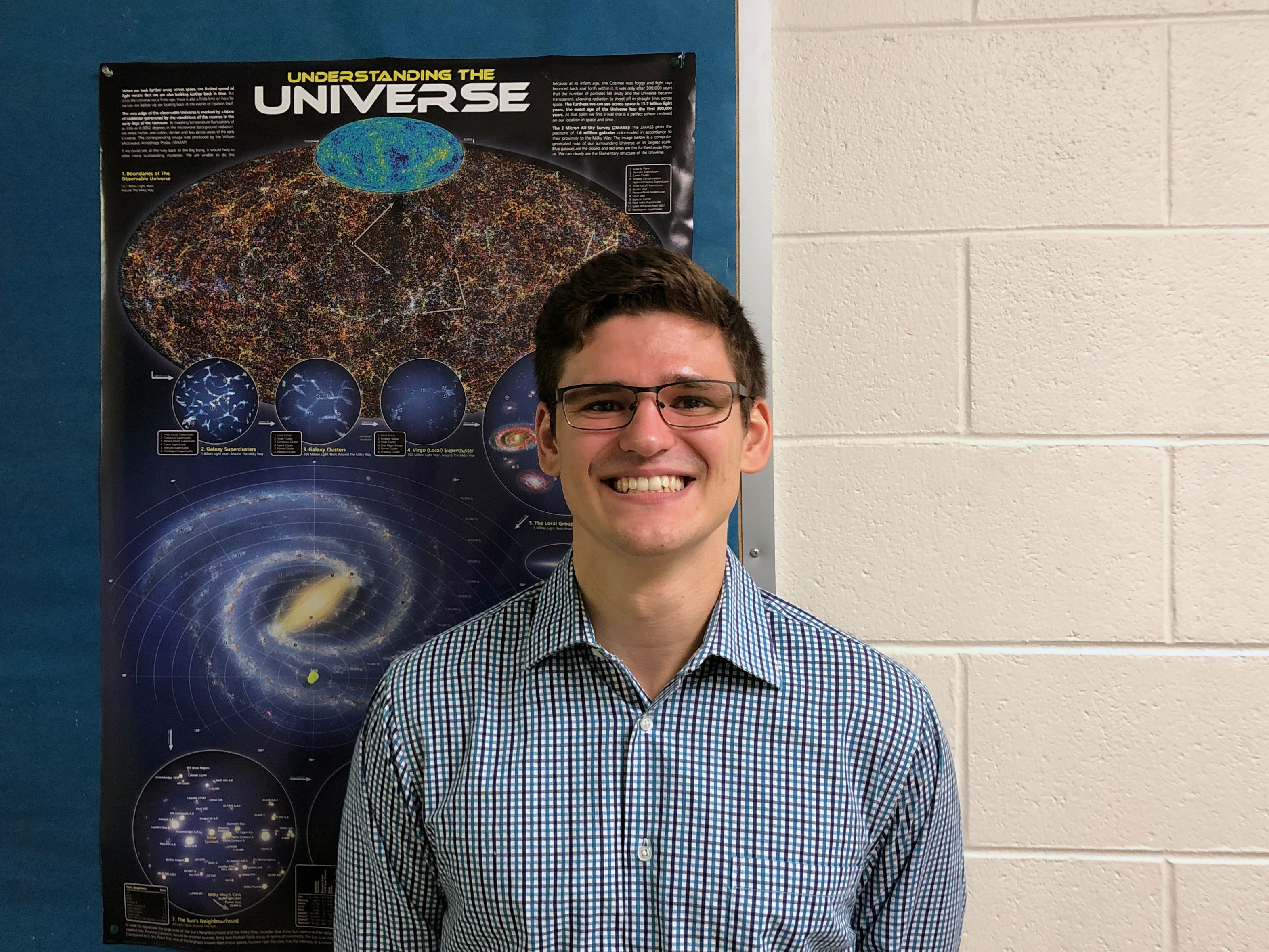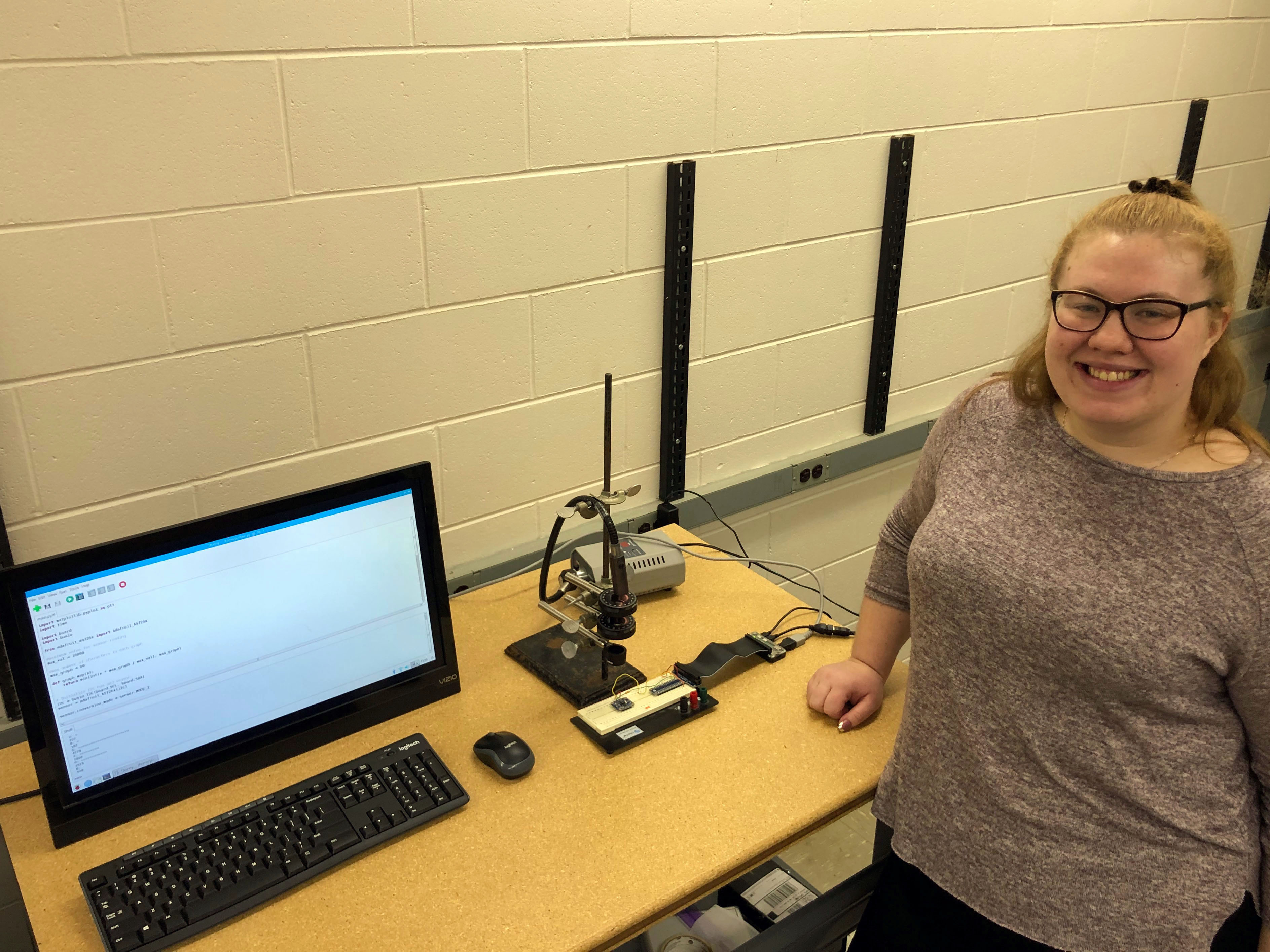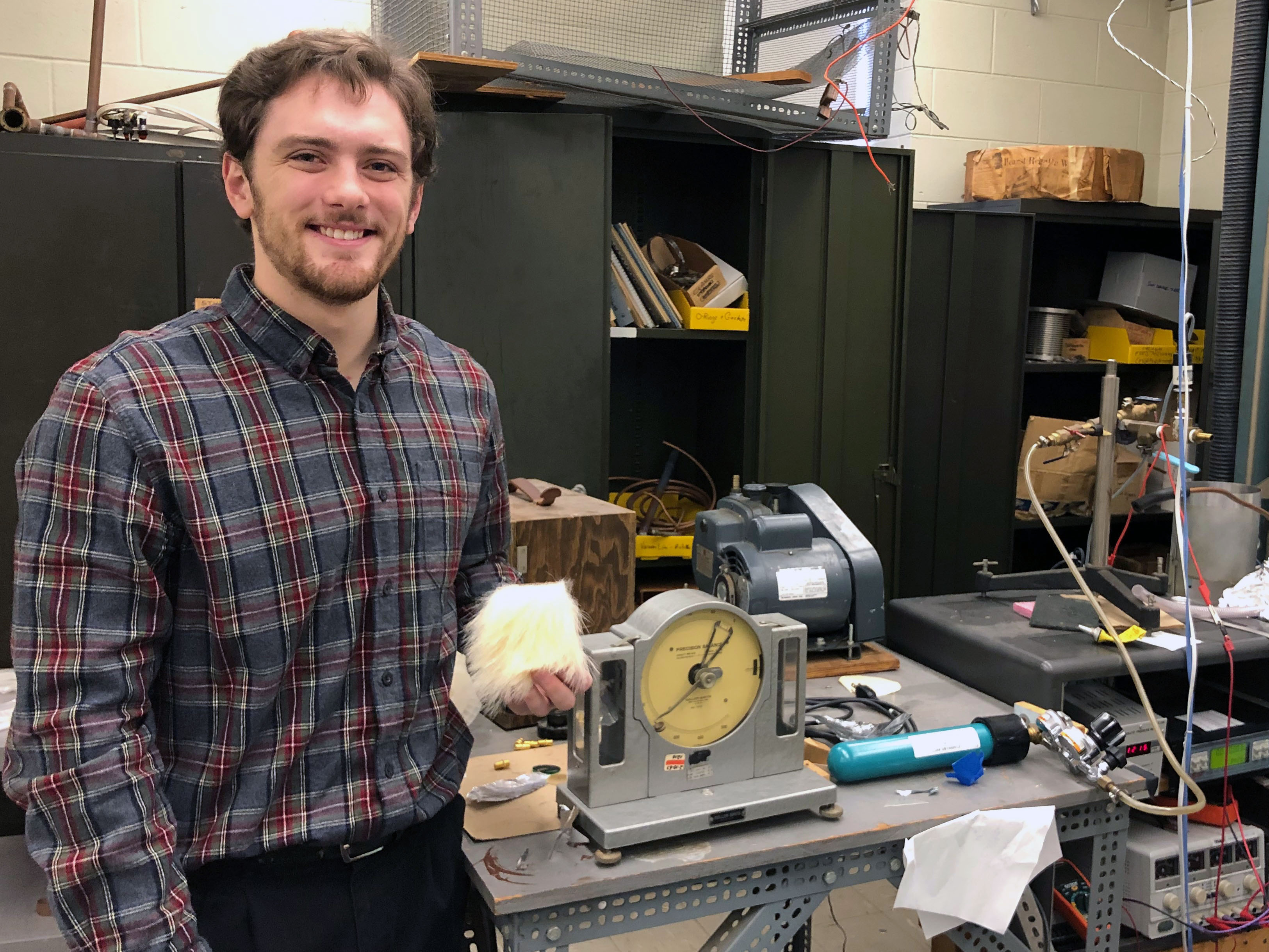Senior Research Projects 2018 - 2019
Seniors present to the physics department the results of their Phys 489/490: SYE Advanced Laboratory and Phys 499: Honors SYE research projects at the end of each semester. The abstracts for their research are below and photos of the student presenters follow afterwards:
Spring 2019
Analysis and Synthesis of a Bass Guitar - Matthew Bitzer '19
This paper presents the work towards analyzing a bass guitar sound wave and the creation of a corresponding synthesizer. A synthesizer is a musical instrument capable of producing a very wide range of electronic sounds including those of other instruments. After measuring the signal produced by an electric bass guitar, the voltage data were analyzed using Discrete Fourier Transform functions in Wolfram Mathematica. The waveforms were resynthesized to produce a recognizable bass guitar sound. The resulting synthesizer, including the methods used to model the attack, sustain and decay aspects of the waveform, are presented in this paper.
For more information, contact Dr. Catherine Jahncke
Spectroscopic Studies of Ceria Nanoparticles using Raman Spectroscopy - Dhimiter Cobani '19
Oxygen is crucial to the normal functioning of human physiology, especially the brain which consumes about 20 % of the total oxygen in the body due to its high metabolic rate. Certain catalysts in the brain can reduce oxygen to more reactive forms producing reactive oxygen species (ROS). The ROS have essential functions in the body, but they are chemically reactive, and they can strip electrons from biomolecules, such as DNA and proteins. This can result in a dysfunctional cell and ultimately in a non-functional one. Cells have systems that can neutralize ROS, but when the number of reactive species exceeds the capacity of these systems, cells experience oxidative stress which can induce cell death. Oxidative stress has been linked with Alzheimer’s disease, Parkinson’s disease, amyotrophic lateral sclerosis (ALS), and multiple sclerosis (MS). Administering ceria nanoparticles to experimental animals with MS has shown MS symptoms declining in those animals. However, the underlying mechanism of how ceria behave in blood plasma is still unknown. We implemented spectroscopic studies, specifically Raman Spectroscopy, to better understand the interaction between ceria and biomolecules by using Bovine Serum Albumin (BSA) as a protein model. Raman spectra of citrate, BSA, and ceria coated with citrate were collected to investigate whether Raman can provide insight into ceria-BSA interaction. We present data that establishes the Raman active vibrational energies of ceria, BSA, and the ceria – BSA.
For more information, contact Dr. Catherine Jahncke or Dr. Adam Hill
Reducing HI spectra for Optical Selected Targets in APPSS - Zeyu Lu '19
The Arecibo Pisces-Perseus Supercluster (PPS) Survey (APPSS) is using the Arecibo L-Band Wide (LBW) receiver to observe galaxies in the direction of PPS. The goal is to derive peculiar velocities and distances via the Baryonic Tully-Fisher Relation (BTFR) I have analyzed observations along a strip of the sky between the declinations of 23° and 35° and right ascensions 22h to 3h. The strip included 133 targets. I analyzed each target’s LBW spectrum using IDL procedures developed by astronomers at Cornell University to determine whether they were detections of real galaxies or false detections due to radio frequency interference (RFI). For real galaxies, the parameters derived included the total flux, the recessional velocity, and velocity width due to the rotation rate of the galaxy. The values of these parameters indicate whether the target is a good candidate for application of the BTFR. Thirty-nine percent of the 133 targets were detected, among which 56% are likely to be galaxies. The Sloan Digital Sky Survey (SDSS) provides the optical observations which can be used to calculate the distances of galaxies via BTFR. With the distances, the Hubble velocities due to the expansion of the universe can be separated from the peculiar velocities due to the gravitational attraction of the dark matter filament. An ultimate goal of APPSS is to calculate the total mass of the dark matter filament along which the PPS is aligned, using all the galaxies detected over the four years of APPSS observations.
For more information, contact Dr. Aileen O'Donoghue
Fall 2018
Creation and Analyzation of the Angular Power Spectrum for the Cosmic Microwave Background Data - Greg Blasz '19
The Cosmic Microwave Background (CMB) is an important pillar of modern cosmology. The CMB variations, or anisotropies, and the related angular power spectrum are used to model the composition and geometry of the universe. This paper focused on coding with the HEALPix package to recreate the results from the Wilkinson Microwave Anisotropy Probe (WMAP) mission. Power spectra that reflected the first peak were successfully created. However, the derived power spectra were a poor match to the accepted power spectrum. Thus the WMAP data is not a good choice for a simple recreation of the accepted power spectrum. This was because the cleaned maps were smoothed to too large an angular value and the uncleaned maps contained too much galactic foreground contamination.
For more information, contact Dr. Cristian Armendariz-Picon
An Inexpensive Portable Spectrometer - Emma Kitchner '19
This work looks to create a spectrometer that is cheap and portable, allowing for data to be collected and analyzed in the field. The first inexpensive spectrometer uses a camera, a diffraction grating, and a computer program; the idea and the software from A. Scheeline and K. Kelly. The second inexpensive spectrometer was based on A.J Das et. al. who built a spectrometer using a spectral chip and an Arduino. Our work looks to make their work even more cost-effective. For example, our spectral chip, AS7262, costs $20.00 while their Hamamatsu mini spectrometer costs $220.00. We also show how our spectral chip reads the change in light intensity.
For more information, contact Dr. Munir Pirbhai
An Optical Model for a Polar Bear Pelt - William Merchant '19
Polar bears were discovered to appear black when filmed with a UV camera in the early 1970’s. Since then, debate as to the mechanism that causes this phenomena has been strongly debated with some researchers stating that the animals harvest the high energy UV rays as a means of thermoregulation. To do this these researchers claim a polar bear pelt guides the light to the surface of the skin, either fiber optically or through Mie scattering. This study looks at a simpler explanation based on the high absorbance of polar bear fur in the UV, by making use of previous researchers data, as well as new data for the reflectance, transmittance and absorbance of polar bear fur. Evidence supporting this simpler model was found in new and old data.
For more information, contact Dr. Daniel Koon

